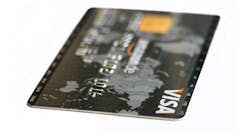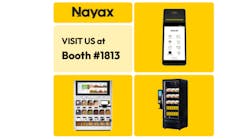With the evolution of the Internet of Things, the number of devices that are created and need connectivity to the internet to function is skyrocketing. Operators have more options than ever before with internet-connected equipment to facilitate mobile payments, real-time analytics, remote monitoring, maintenance alerts, tracking transactions and so much more.
When the Internet of Things is without a reliable internet connection, the “thing” stops working, which can greatly impact an operator’s bottom line and leave customers frustrated. (The “thing” in this context, by the way, is an entity or physical object that has a unique identifier.)
Once an operator incorporates “smart” equipment, having a reliable connectivity solution is vital. The key for a deployer or operator is making sure their equipment gets connected and stays connected to the internet. There are many connectivity options available in the marketplace and we will do our best to explore each option along with the benefits and potential drawbacks of each so that you can ensure your operations run smoothly and customers have a consistent positive experience.
Existing local internet connections
It is enticing to look for low-cost or “free” connectivity solutions when setting up a new deployment location. If there is an existing local internet connection available at the location this can be a good option to explore. The upside is that there aren’t any additional costs to incur, and most local connections will have decent bandwidth speeds.
However, if you are placing equipment at a location you don’t own, most of these third-party venues don’t want outside equipment or devices on their networks for security purposes, so this makes it more challenging to take advantage of an existing connection on premises.
It can also be more time consuming to get local IT to work with you and then you also don’t have any control when the network goes down. The associated costs (service calls, lost sales, shrinkage) of one client-provided data line failure will usually offset the cost of having provided your own solution for three years.
Pros
- No monthly data costs
- Satisfactory bandwidth speeds
Cons
- Possible need to open firewalls or to enable security rules with IT can be burdensome
- Static IP connections are rare
- Spotty Internet service or poor download/upload speed
- Local IT might be resistant or unwilling to troubleshoot your potential internet connectivity problems
Local Wi-Fi
Another option most operators will look at when setting up is the availability of local Wi-Fi networks that they can jump on. Typically, there are no monthly data charges, and it is a quick and easy way to get their equipment operational while also keeping their monthly operating expenses low.
However, like existing local area network connections, using an existing Wi-Fi connection provides no control when the network goes down since someone else is managing it. There are also risks with security and most networks are not compliant with PCI for credit card payment processing.
Pros
- No monthly data costs
- Quick and easy to get operational
Cons
- Not a secure connection method – security concerns
- Connection speeds can change depending on number of users
- Wi-Fi may not be PCI compliant
Purchased AirCard, MiFi or jetpack
Operators looking for a relatively quick and easy way to bring their own cellular connectivity may look at deploying a device like a jetpack to handle their connectivity needs that they purchase from Verizon or AT&T. Once purchased, the device is ready to use and connect securely to with relative ease. It alleviates some of the drawbacks of the options listed previously because it is more secure than Wi-Fi and other public networks.
One of the major drawbacks of this type of connectivity is that it is not built for commercial applications so it may not be able to handle the demands of a busy breakroom. If an issue is encountered, it will require a manual power cycle where the operator will have to visit the location to remedy the problem. While this may work for a location or two, it is difficult to scale and be a long-term solution for a larger operator.
Pros
- Setup is simple
- Secure network connectivity
Cons
- Monthly data costs
- Subject to either overages or slowing after certain data thresholds
- To reset lost connections usually requires a manual power cycle
- Designed for personal and not commercial use
Purchased hardware and setup data plans
Operators looking to manage their own connectivity can purchase a cellular modem from a hardware manufacturer and set up their own data plans with a carrier. This option alleviates many of the issues addressed earlier because you can manage the network directly and gives you full control. If the location is in a spot that has good cellular coverage, this could be a good option.
The drawback is that most operators don’t have the expertise and/or time to deal with set-ups, configurations, software, security, data plans and carrier relationships, troubleshooting, and on and on. Instead of focusing on running a successful business, operators using this option are forced to spend considerable resources managing their own connectivity which takes them away from focusing on what they are good at.
If a piece of hardware does have issues, operators must try and remedy things on their own with little help or support from suppliers. Purchasing hardware upfront can also be very expensive depending upon the size of the operation and how many locations they are connecting.
Pros
- You have full control of the hardware and data plans
- Secure connectivity
Cons
- Monthly data costs
- Setting up the configurations with all the different options can be difficult for a novice
- Coordinating data plans to be as low as possible without hitting overages can be a time-consuming balancing act
- Maintaining portfolios with software versions can require trained and dedicated resources for communications
Managed service provider
One other option to consider for your internet connectivity needs is partnering with a fully managed solution provider that allows an operator to outsource their connectivity needs to someone else.
By partnering with a fully managed solution provider, operators can effectively outsource one of the most important components to their success to a reliable partner who focuses 100% of their time to making sure their devices stay connected. Operators pay for the data that they use and are protected from huge overages while also having one point of contact if they have any issues with their connectivity.
A managed solution provider offers ease of installation, network security, purchase and lease options, customized data plans, and more. By partnering with a managed service provider, operators can focus on their business with the peace of mind that their equipment will get connected and stay connected. With plug-and-play functionality built in, all the operator has to do is plug in the device and use it.
Pros
- Single source of contact 24/7 support for both hardware and connection issues
- Ease of installation for virtual plug and play.
- Network security, connectivity, profiles, firmware upgrades are handled by the managed solutions provider- reducing your risk.
- Ability to have multiple carriers and pay just one bill
Cons
- Possibly higher monthly communication costs since all features and management are included
- Not a good option if cellular reception is poor at a given location
All said
Understanding the strengths and drawbacks of the options available is necessary to select the best one for each application.
From using an existing local internet connection or publicly available Wi-Fi network to a fully managed wireless solution, and everything in between, it’s important to know your options and choose the connectivity solution that’s best for your vending kiosks.
ABOUT THE AUTHOR
Brian Gill is national sales executive of OptConnect. Gill is responsible for growing the company's services across multiple verticals. His main expertise is in the unattended retail space. With more than 30 years of progressive career growth in executive-level positions in the vending, amusements and coin-op laundry, Gill is a high-energy business leader with deep industry and multi-generational relationships. He can be reached at [email protected] or (315) 542-7875.








